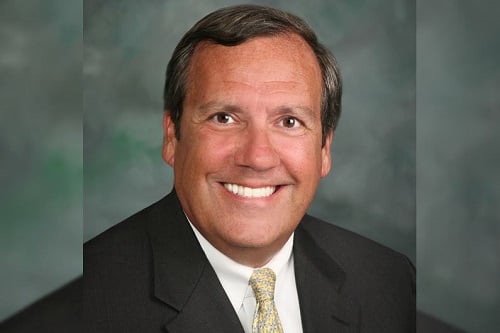

Drones flying over our heads could become an everyday sighting soon if the Federal Aviation Administration (FAA) has its way. In February, the FAA released its proposed rules for commercial drone use, or small unmanned aircraft systems (UAS), in the Federal Register, and has since taken other steps that indicate the skies, could, in the near future, open up for drones.
In early June, the FAA issued the Hensel Phelps Construction Company of Greeley, Colorado, with a waiver to fly a drone over people that has been equipped with a parachute, and more broadly predicts that the market for commercial drones could triple between 2019 and 2023.
“It used to be that you weren’t allowed to use drones commercially. You had to get a special exemption from the FAA,” said Tom Karol (pictured), general counsel – federal, at the National Association of Mutual Insurance Companies (NAMIC). A major prohibition that was once in place instructed that drones could not fly over people or beyond the operator’s line of sight. In turn, in the most recent move by the FAA, “The major development was a proposed rule that would permit drones to be operated over people and fly at night.”
While the FAA has made steps towards opening the drone market, there are more pieces that need to fall into place - namely that the FAA is in the midst of drafting a proposed rule on remote identification, or the ability of a UAS to provide identification information that can be received by other parties while in flight, for public comment, which is the next step to enabling routine drone operations in the US.
“Realistically, the next year is probably not going to be impacted by these rules – [they] would allow for much greater use by commercial users, but they can’t be finalized until rules that haven’t even been proposed yet are finalized,” said Karol. “If those remote identification rules come out tomorrow, there’s going to be a 60-day comment period and reconsideration, and then a final rule has to come out, so I’m not really confident that we’re going to have remote identification rules finalized in 2019. Those have to be done before [rules on] operating over people and at night can be finalized. Everything is basically on hold.”
On the plus side, insurers do have the green light since it’s clear that more widespread use of drones will eventually be allowed. Already, this technology is making the process of property inspection more efficient, both pre- and post-loss, and especially during catastrophic events.
“A lot of companies are using [drones] with respect to disasters, and the smaller member insurance companies of NAMIC have seen a lot of development with respect to hiring third-party drone operators to help them with claims management,” said Karol, though he added that the use of drones is common across the board, from some of NAMIC’s biggest members down to its smallest.
However, there are still more issues to resolve, even after the next set of rules is in place, before drones completely take off.
“There are tremendous amounts of growing opportunities for the insurance use of drones, but there are still requirements there,” said Karol. “Probably the biggest concern so far to date has been a lot of the privacy-related issues and trespass. Those issues remain undefined so that if you fly over someone else’s property or take pictures of someone else’s property, there could be some problems there. You have to be aware of what’s been defined, and what’s not been defined yet.”
